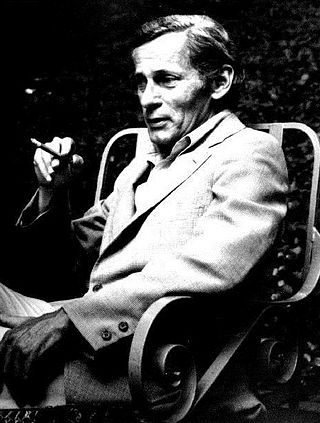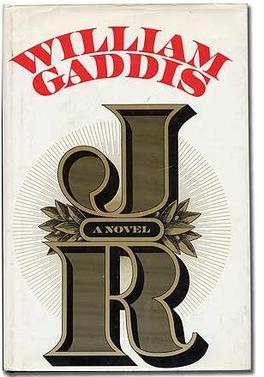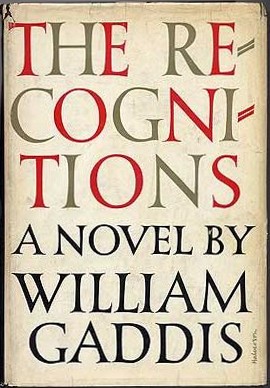
William Thomas Gaddis Jr. was an American novelist. The first and longest of his five novels, The Recognitions, was named one of TIME magazine's 100 best novels from 1923 to 2005 and two others, J R and A Frolic of His Own, won the annual U.S. National Book Award for Fiction. A collection of his essays was published posthumously as The Rush for Second Place (2002). The Letters of William Gaddis was published by Dalkey Archive Press in February 2013.

Larry Jeff McMurtry was an American novelist, essayist, and screenwriter whose work was predominantly set in either the Old West or contemporary Texas. His novels included Horseman, Pass By (1962), The Last Picture Show (1966), and Terms of Endearment (1975), which were adapted into films. Films adapted from McMurtry's works earned 34 Oscar nominations. He was also a prominent book collector and bookseller.

William Howard Gass was an American novelist, short story writer, essayist, critic, and philosophy professor. He wrote three novels, three collections of short stories, a collection of novellas, and seven volumes of essays, three of which won National Book Critics Circle Award prizes and one of which, A Temple of Texts (2006), won the Truman Capote Award for Literary Criticism. His 1995 novel The Tunnel received the American Book Award. His 2013 novel Middle C won the 2015 William Dean Howells Medal.

Lionel Mordecai Trilling was an American literary critic, short story writer, essayist, and teacher. He was one of the leading U.S. critics of the 20th century who analyzed the contemporary cultural, social, and political implications of literature. With his wife Diana Trilling, whom he married in 1929, he was a member of the New York Intellectuals and contributor to the Partisan Review.
Cynthia Ozick is an American short story writer, novelist, and essayist.

J R is a novel by William Gaddis published by Alfred A. Knopf in 1975. It tells the story of a schoolboy secretly amassing a fortune in penny stocks. J R won the National Book Award for Fiction in 1976. It was Gaddis' first novel since the 1955 publication of The Recognitions.

The Recognitions is the 1955 debut novel of American author William Gaddis. The novel was initially poorly received by critics. After Gaddis won a National Book Award in 1975 for his second novel, J R, his first work gradually received new and belated recognition as a masterpiece of American literature.
Katharine Weber is an American novelist and nonfiction writer. She has taught fiction and nonfiction writing at Yale University, Goucher College, the Paris Writers Workshop and elsewhere. She held the Visiting Richard L. Thomas Chair in Creative Writing at Kenyon College from 2012 to 2019.

Cynthia Leitich Smith is a New York Times best-selling author of fiction for children and young adults.
Alexander Louis Theroux is an American novelist and poet. He is known for his novel Darconville's Cat (1981), which was selected by Anthony Burgess for his book-length essay Ninety-Nine Novels: The Best in English Since 1939 – A Personal Choice in 1984 and by Larry McCaffery for his 20th Century's Greatest Hits list.

James McCourt is a gay American-born writer and novelist who was raised in Jackson Heights, Queens. McCourt has been with his life partner, novelist Vincent Virga, since 1964 after they met at Yale University as graduate students in the Yale School of Drama. McCourt's and Virga's papers are held at Yale's Beinecke Rare Book & Manuscript Library.
Elizabeth Graver is an American writer and academic.
Steven Moore is an American author and literary critic. Best known as the primary authority on the novelist William Gaddis, he is the author of the two-volume study The Novel: An Alternative History.
Irving Malin was an American literary critic. Malin attended Thomas Jefferson High School and Jamaica High School and graduated magna cum laude from Queens College in 1955 and received his PhD from Stanford University in 1958. He married Ruth Lief in 1955 and they remained married until his death. He taught at the City College of New York from 1960 until his retirement in 1996. Malin did his dissertation on the fiction of William Faulkner and made his initial academic mark as a critic of American Jewish Literature, editing an early collection on the fiction of Saul Bellow as well as a critical book and a general anthology on Jewish literature in the US. He subsequently became interested in writers who practiced innovative techniques such as James Purdy and John Hawkes as well as writers who broke down the boundaries between fiction and nonfiction such as William Styron and Truman Capote. One of the pioneering academics to take an interest in metafiction and experimental writing, Malin was an early contributor to the Review of Contemporary Fiction, writing over five hundred book reviews for this and other publications. In the latter portion of his career, Malin edited many anthologies of essays, including books on Henry James, Thomas Pynchon, William Goyen, George Garrett, Don DeLillo, Vladimir Nabokov, Leslie Fiedler, and William Gass. He was a fellow at Yaddo and the Huntington Library and served on many boards and award panels. Malin died December 3, 2014.

The Tunnel is a 1995 novel by the American author William H. Gass. The novel took 26 years to write and earned him the American Book Award of 1996, and was also a finalist for the PEN/Faulkner award.
Michael Gorra is an American professor of English and literature, currently serving as the Mary Augusta Jordan Professor of English Language and Literature at Smith College, where he has taught since 1985.
"Mr. Difficult", subtitled "William Gaddis and the problem of hard-to-read books", is a 2002 essay by Jonathan Franzen that appeared in the 9/30/2002 issue of The New Yorker. It was reprinted in the paperback edition of How to Be Alone without the subtitle.

Middle C is a 2013 novel by William H. Gass. Gass started writing it sometime after 1998, with a first excerpt appearing in 2001.
American Review was a literary journal published from 1967 to 1977 under editor Ted Solotaroff. Though it only published for ten years, it was the longest running paperback literary periodical at the time, and was influential for the large amount of work it published from notable authors.
Leaving the world a better place, often called the campground rule, or just leaving things better than you found them, is an ethical proposition that individuals should go beyond trying not to do harm in the world, and should try to remediate harms done by others.








